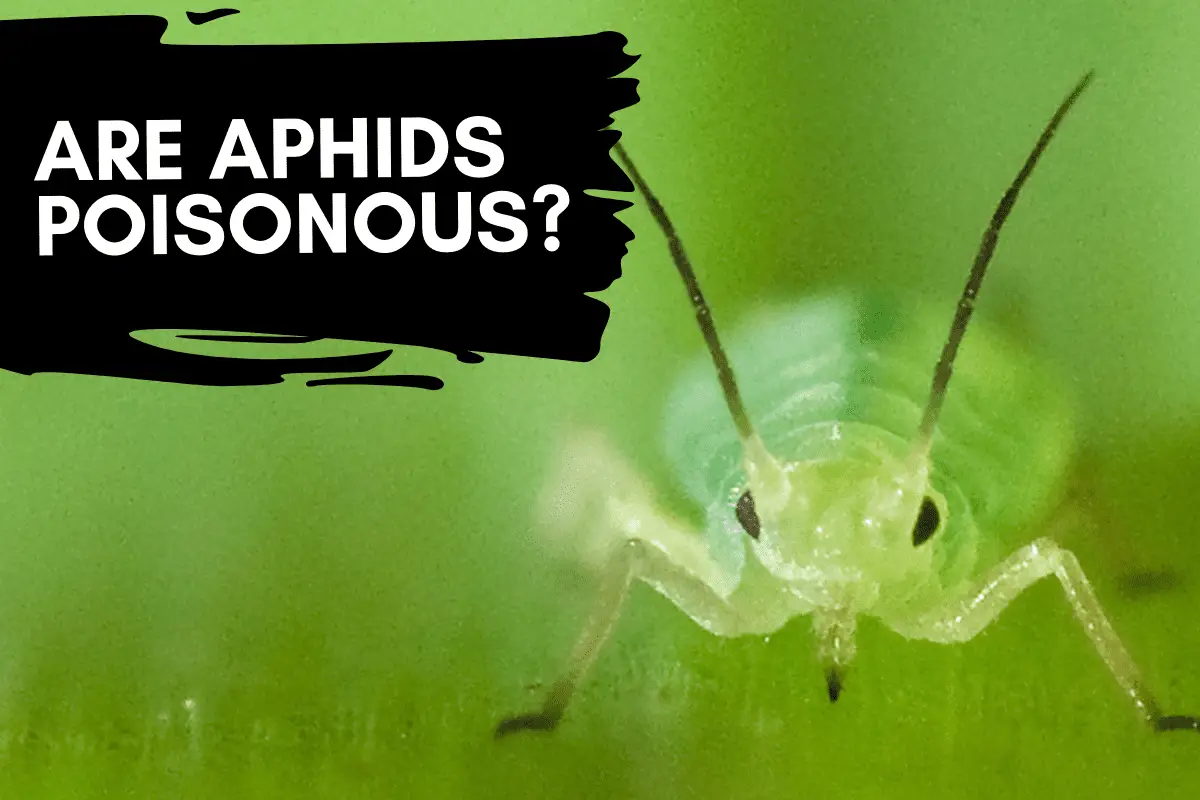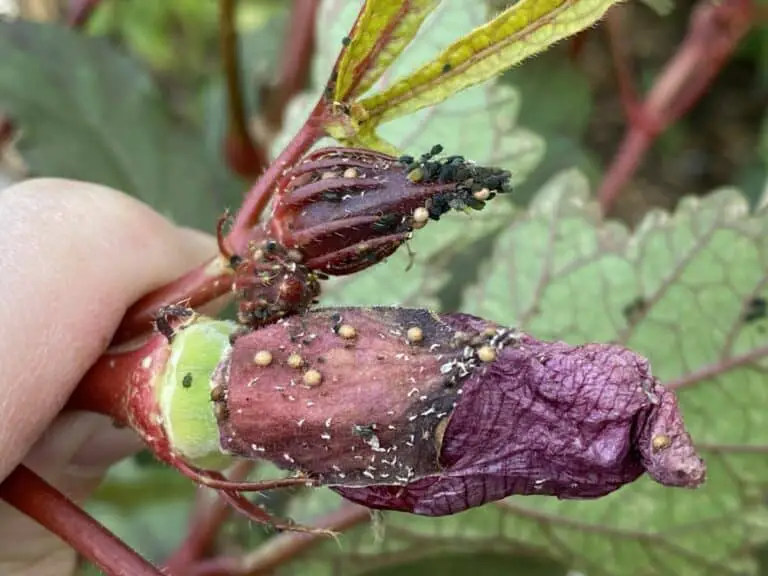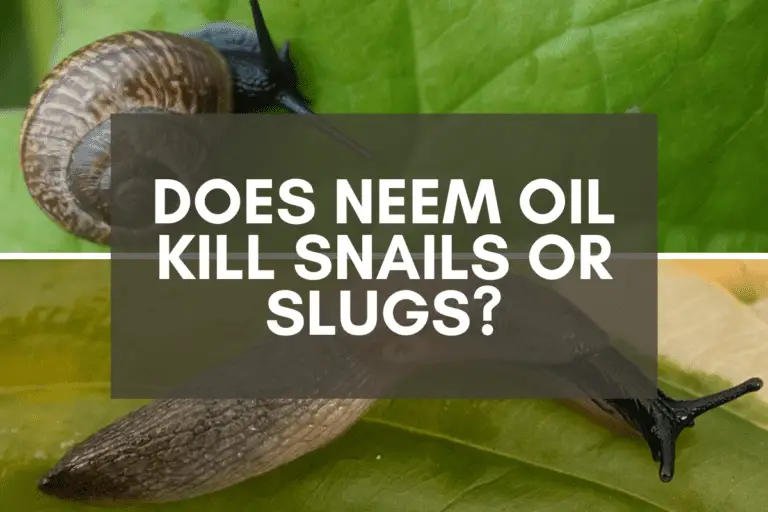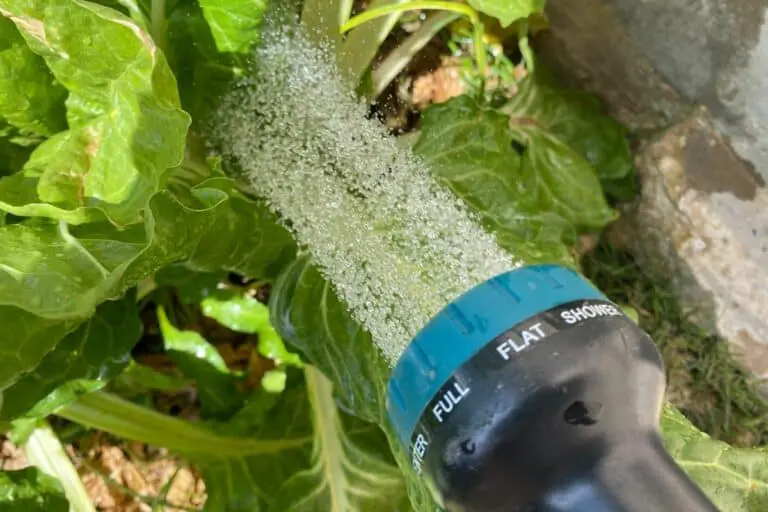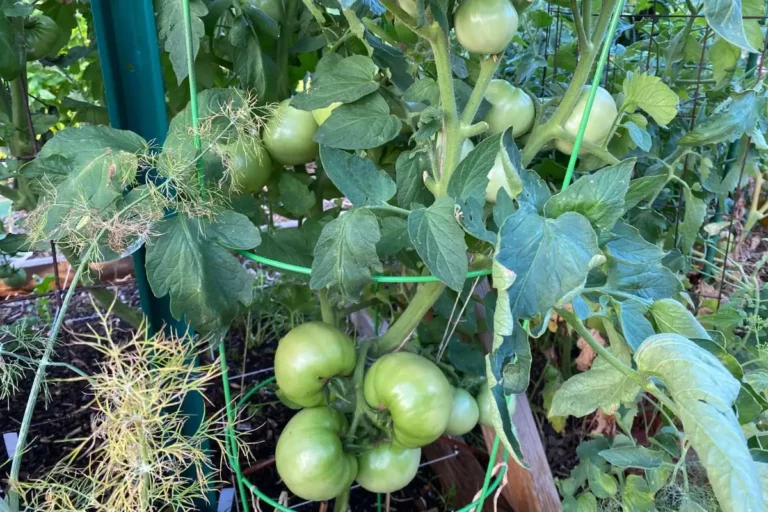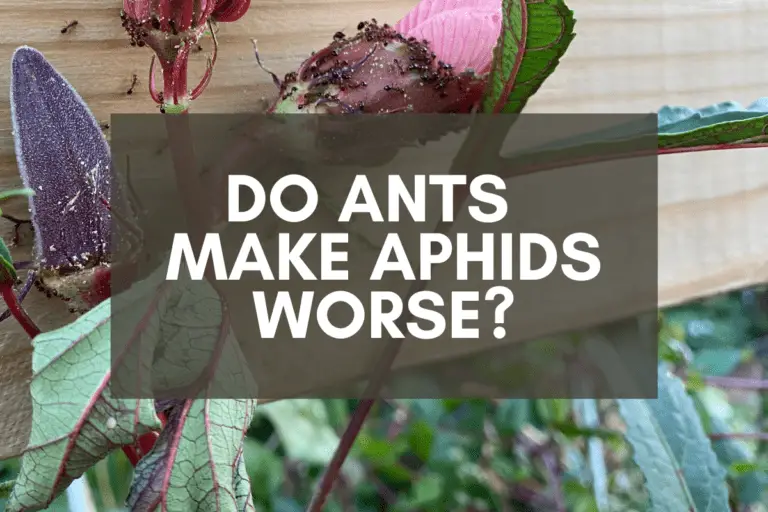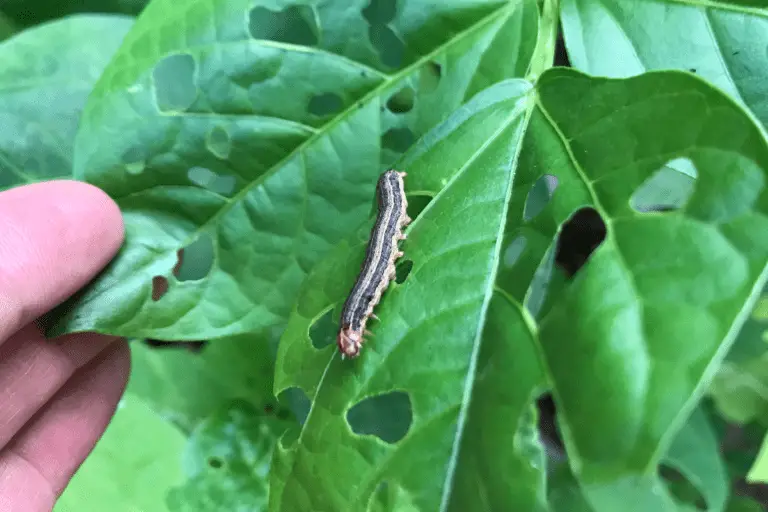Are Aphids Poisonous? Things You Should Know + Helpful Tips
Have you ever noticed a cluster of aphids in your garden and wondered if they were poisonous. Can they sting or bite like wasps and ticks? Can they transmit diseases like mosquitoes?
Aphids are not poisonous. They can neither sting nor bite since their piercing mouthparts are designed to puncture plant tissue, not skin. They can transmit hundreds of plant diseases, but unlike ticks and mosquitoes, they can’t transmit diseases to humans or pets.
There is one extremely rare exception to this rule–a single aphid species that can only be found in central Taiwan (more on that below)–but in general, you have nothing to fear from aphids beyond the damage they can do in your garden.
So let’s take a quick look at why exactly aphids aren’t poisonous despite the fact that they’re often vectors for disease transmission.
Are Aphids Poisonous to Humans?
To understand why aphids can’t poison us, let’s take a moment to think about bugs that can harm us: ants, a handful of caterpillars, mosquitoes, scorpions, various spiders, ticks, wasps, and wheel bugs.
What do these bugs have in common?
If you guessed something along the lines of “They can bite and sting,” then you’re correct. More specifically, poisonous insects can do two important things. First, they have mouthparts that are designed to pierce epidermal tissue, such as human and animal skin. Second, they have the ability to transmit fluids or chemical compounds via mouthparts or stingers.
Take ticks, for example. Ticks are notorious spreaders of Lyme disease, but their goal is not to spread disease. What they want is to puncture the epidermal layers of mammals so as to siphon off blood. They do so using their chelicerae and hypostome. The chelicerae are two tiny knife-life appendages that flank the mouth and cut through epidermal layers. Once the chelicerae have penetrated the skin, the tick uses its hypostome–something akin to a barbed needle–to penetrate further into the epidermis in search of blood, which it draws up through a small groove. In the process, it secretes saliva, and it’s this secretion that ends up transmitting disease from ticks to humans and animals.
Like ticks, aphids have sharp mouthparts, and they can also spread disease. So this begs the question: Why aren’t aphids poisonous?
Although they have piercing mouthparts, aphids are not poisonous because they cannot pierce skin or engage in cross-species disease transmission. They have needle-like mouthparts known as stylets, but these stylets are incapable of piercing anything but plants’ epidermal layers.
What’s interesting about this process is that aphids, much like ticks, also secrete saliva during the feeding process. As their stylets puncture the plant’s epidermal layers in search of phloem cells–tubular cells that transmit micronutrients through the plant–aphids submit a watery saliva while feeding and a gel-like saliva while moving their stylets around.
But here’s the thing: Their salivas transmit plant-borne diseases only. There has never been a recorded case of interspecies disease transmission despite there being over 4,000 aphids species across the world. Thankfully for humans (and their furry friends), aphids just aren’t equipped for that sort of thing.
Can Aphids Cause Skin Irritation?
I’ve seen an article here and there in the garden blogosphere that suggest that aphids might cause mild skin irritations. But these are very misleading claims.
Aphids cannot irritate skin because they cannot puncture, damage, or pierce it in any way. Even if they attempted to use their stylets, they would be unable to cut through that kind of epidermis or cause skin irritation or other kinds of harm.
I hesitate to mention this given how incredibly rare they are, but there’s one singular exemption to this rule: the Ceratoglyphnia styracicola, an aphid species native to the Sun Moon Lake in Central Taiwan.
From what I can tell, the research is pretty thin on this species, but there are a few accounts of C. styracicola aphids who, after being disturbed in their trees, have fallen on and irritated the skin of those who were unlucky enough to be underneath them when they fell. The irritations supposedly disappeared within a day or two, with no lasting damage to the skin. But it’s hard to know what to make of these accounts.
There’s also some anecdotal evidence of pea aphids using their stylets to probe a researcher’s hands, but again, the research is thin on this point.
Some time back, I was curious about this matter and thought I’d do my own test after I saw a cluster of aphids on some kale. Instead of killing them, I slowly scooped some of them up with my index finger.
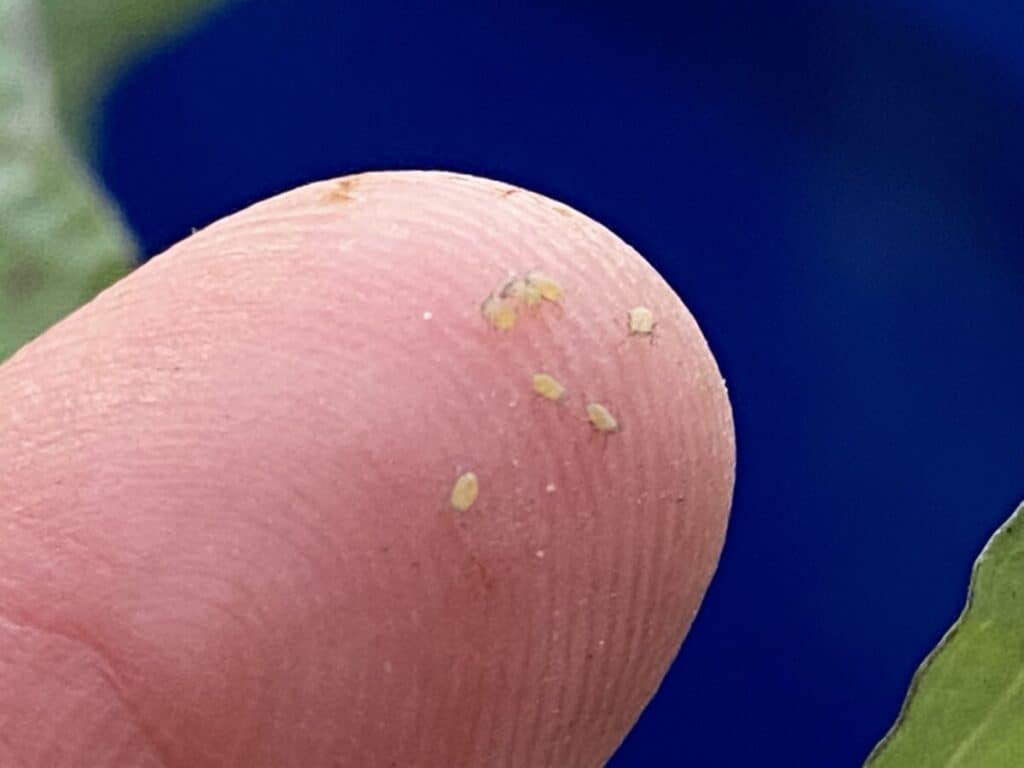
For the next 10 minutes or so, I did other things in the garden–while not using my index finger–to see if the aphids would do anything, but after all that time, I didn’t feel a thing. Most of the aphids remained in place. I only saw one that moved.
In short, nothing happened whatsoever. Go figure!
Are Aphids Dangerous to Eat?
If you’ve gardened for any amount of time, changes are you’ve unknowingly eaten an aphid at some point in your gardening life. Some of them are pretty clingy even when food is washed in the sink. Others come off easily when sprayed with water. Whether you’ve accidentally eaten an aphid or not, here’s the good news.
Aphids are not dangerous to eat. They’re not poisonous, and they won’t cause any digestion problems, even if eaten in large numbers.
I certainly don’t want to eat aphids (and I’m guessing you don’t either), but if I ever accidentally swallowed a few, I wouldn’t be the least bit concerned. My garden is an organic one, so at least I’d know that they were pesticide free!
Are Aphids Harmful to Pets?
Aphids can’t harm pets, including dogs, cats, or any other furry or feathered friends. Unlike lice, they can’t live in or around hair, and they also can’t sting or bite.
If you’ve got pets who like to roam around outside or sniff around your garden, you’ve certainly got some insects you need to look out for, including caterpillars, mosquitoes, spiders, and ticks. But you don’t need to be concerned about aphids.
It’s theoretically possible for your pet to displace an aphid–or to accidentally transport an aphid from one plant to another–but this is highly unlikely. Aphids don’t need pets to spread from plant to plant, so there’s nothing to worry about here.
Are Aphids Dangerous Indoors?
Aphids are tiny (typically 1-3mm), so they’re adept at moving unnoticed from place to place. If you’ve got aphids inside your house, they’ve likely traveled there while attached to the vegetation of a newly purchased plant or a transplant that you brought in from outdoors.
The good news is that there’s no cause for concern.
Aphids aren’t dangerous if found indoors. They can’t harm anyone, and they’re unable to spread beyond the confines of their host plants.
Even if aphids are left on a counter after you’ve washed some vegetables from your garden–something that happened to me last year after I washed some aphid-infested kale last year at the kitchen sink–there’s still nothing to worry about. Those aphids won’t be able to feed on anything, and they’ll be dead within a few days if they somehow manage to stay out of the way and avoid getting squished.
The only cause for concern when it comes to indoor aphids is their ability to spread from one host plant to others, which depends entirely on what you’ve got growing inside your house and how closely your plants are situated to each other.
If you’ve found aphids inside your house, I recommend doing the following:
- Purchase a good spray bottle or use one that’s been thoroughly cleaned.
- Mix a simple neem oil spray using the following recipe: 16 ounces of water + ½ teaspoon liquid soap + ¾ teaspoon neem oil. I’ve included links to the ingredients that I use to make my own neem oil sprays.
- Set the spray bottle to mist and spray your plants thoroughly, including the undersides of all leaves. Don’t spray so much that your plants drip. Just spray enough that you cover all areas with a light coat of neem oil.
- Repeat the process once every 3-4 days until the aphids are no longer visible.
If your plant is thoroughly infested, it might not be worth the time and effort to save it, which means you’ll need to decide whether to try the steps above or simply throw the plant away in the compost or trash.
If you’ve got a larger problem in your outdoor garden, check out my article on using neem oil to kill garden pests. The information you’ll find there will help you deal with aphids, spider mites, white flies, and all kinds of other unwanted bugs.
Want to Learn More?
Aphids are a nuisance to gardeners everywhere, so I’ve spent months writing about them in order to help you garden better.
If you’d like to learn more about aphids and how to handle them when they show up on your property, take a look at my articles below:
- Are Aphids Bad for Dogs? What Every Pet Owner Should Know
- Are Aphids Harmful to Humans? Things You Should Know
- Can Aphids Survive Cold Weather?
- Can Plants Recover from Aphids? Tips to Save Your Plants
- Will Aphids Die in Winter? 5 Things You Need to Know
- Where Do Aphids Come From? Things to Consider
Credit to Kent Loeffler for the photo adapted for this article’s featured image.
